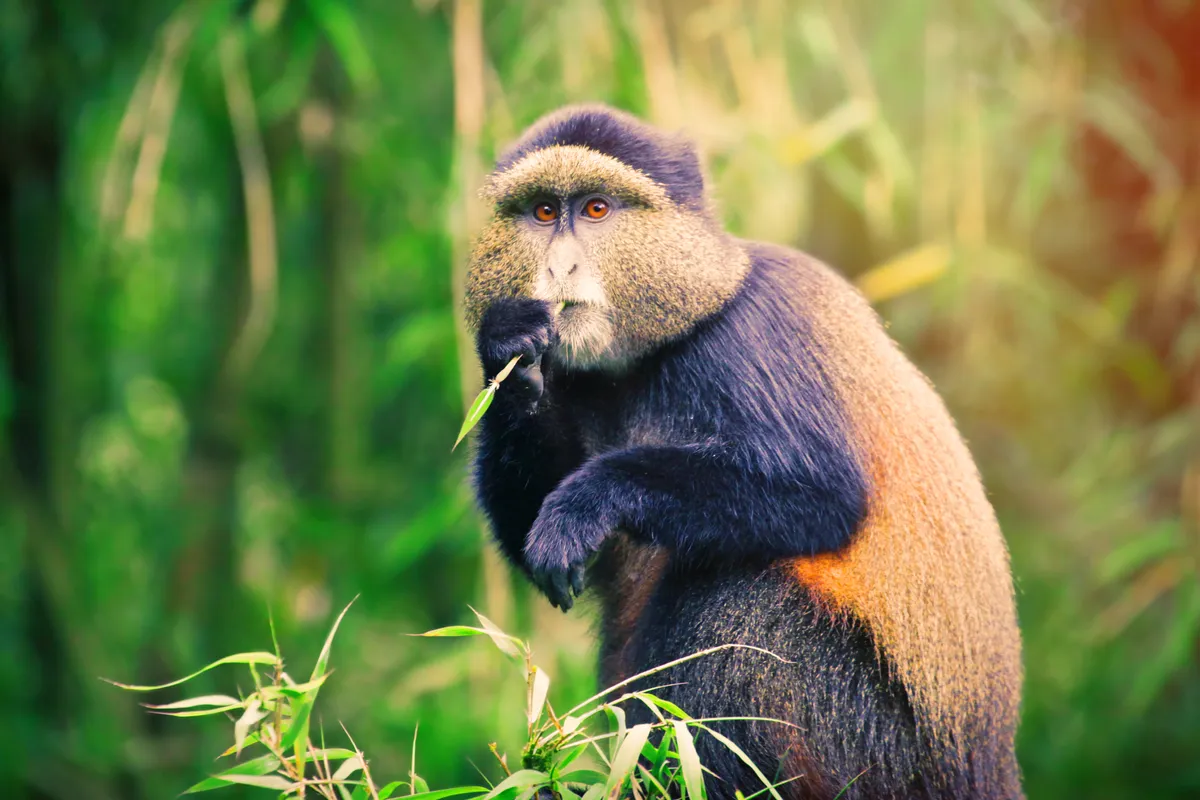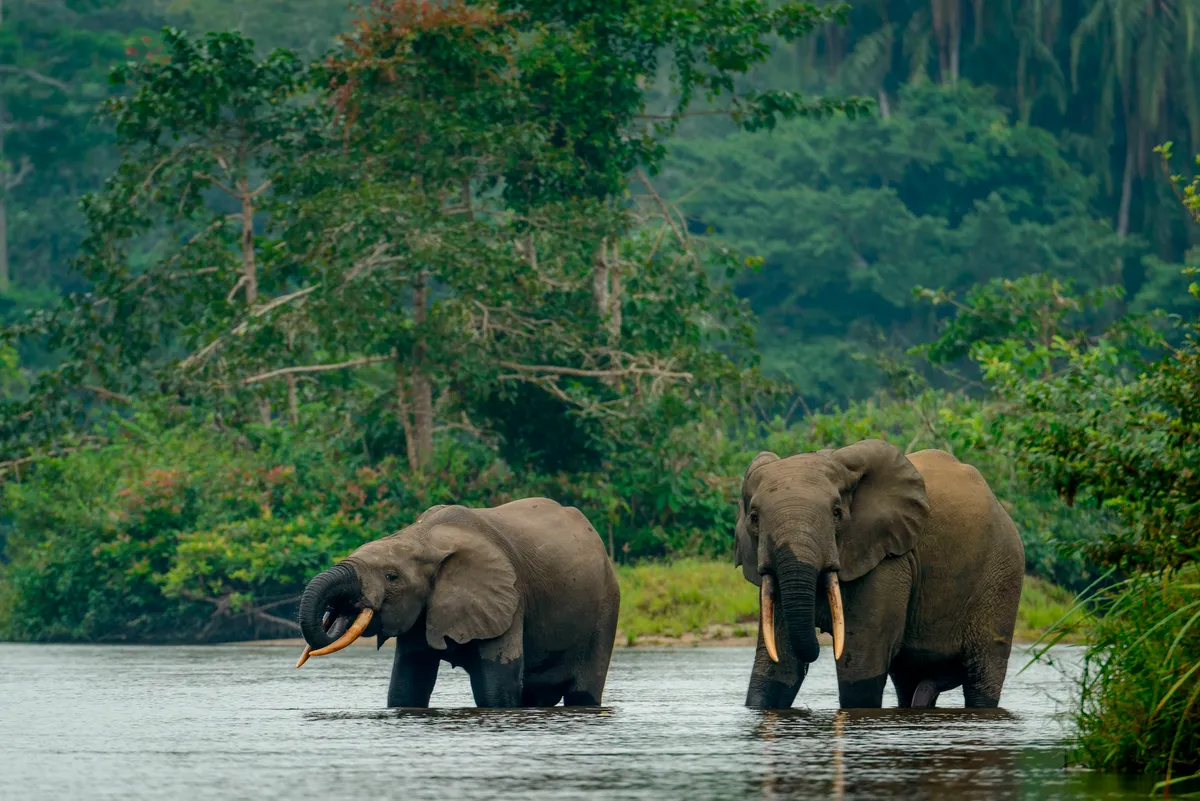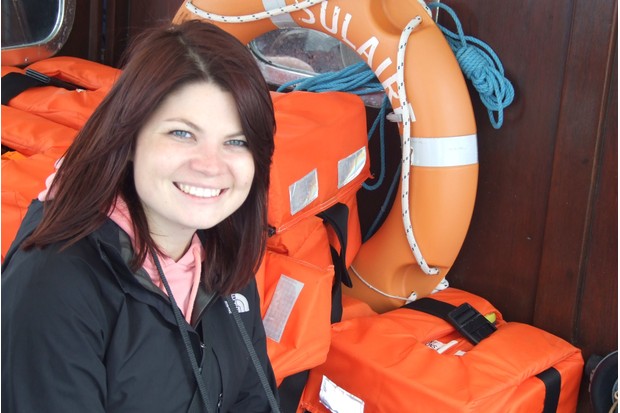There's only one reason that visitors make the trek up into the misty, thickly forested uplands of Africa's smallest and oldest national park - and that's to spend 60 minutes in the company of mountain gorillas. Volcanoes National Park is also known to the world as the research base of American zoologist Dian Fossey, who studied the primates here until her death in 1985.
1
Mountain gorilla, Gorilla beringei beringei

These Endangered primates are confined to small areas of Rwanda, Uganda and DRC, with numbers totalling 1,004. There are 12 habituated troops in Volcanoes. You can approach your designated group to within 7m.
2
Golden monkey, Cercopithecus mitis kandti

A subspecies of Sykes’ monkey, the golden monkey is now confined to the Virunga mountains, inhabiting bamboo forests below 3,000m. These lively creatures are usually seen scampering from branch to branch; two troops are habituated.
3
Other highlights

Volcanoes is bird-rich, with endemics such as the Rwenzori double-collared sunbird, Cinnyris stuhlmanni. Other mammals include the forest elephant, black fronted duiker and bushbuck.
You can also hike to Dian Fossey’s grave at Karisoke, her former scientific base.
Key facts
- Area: 160 sqkm
- Volcanoes: 5
- Cost of gorilla permit: $1,500
When to go
The drier months (mid-December to February; June to September) are the most popular times for gorilla trekking as there is good hiking terrain in the forest.
Go there with
- Expert Africa
- NatureTrek
- africatravel
- Wildlife Worldwide
